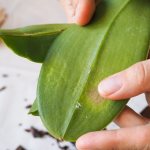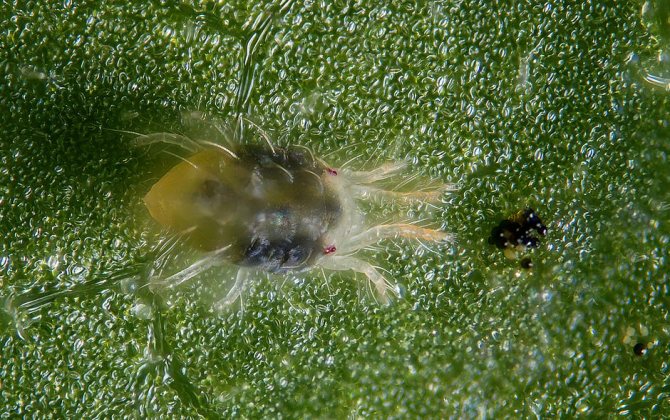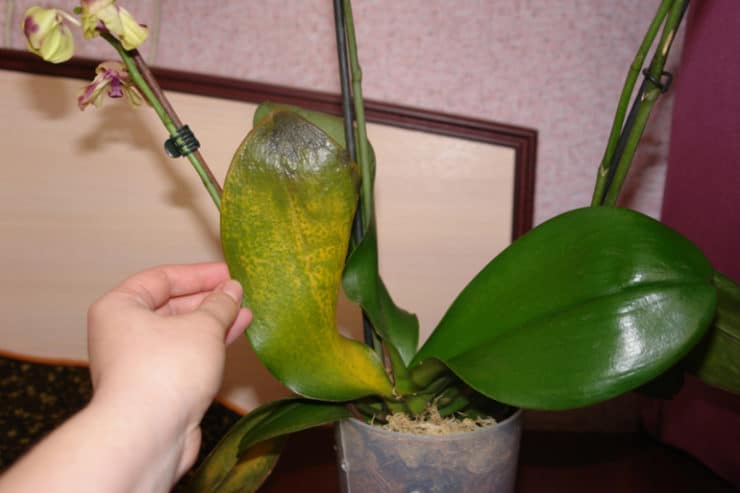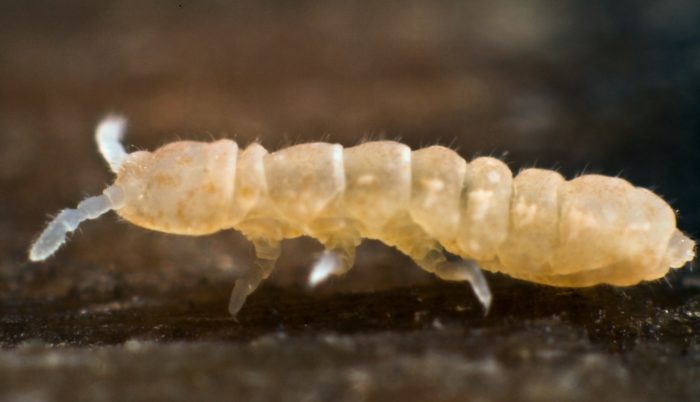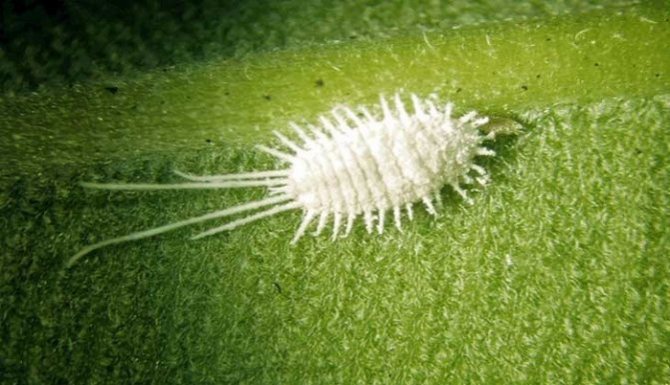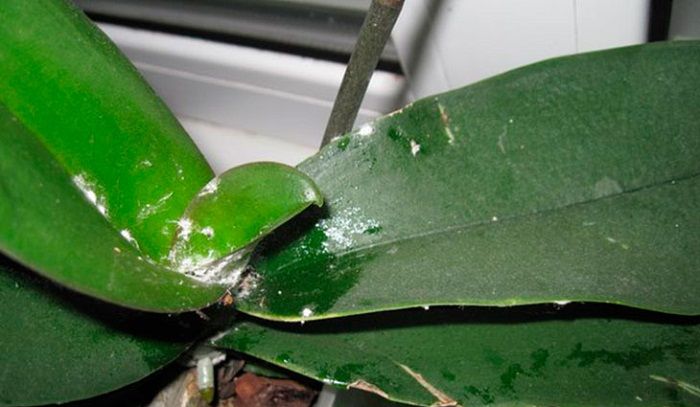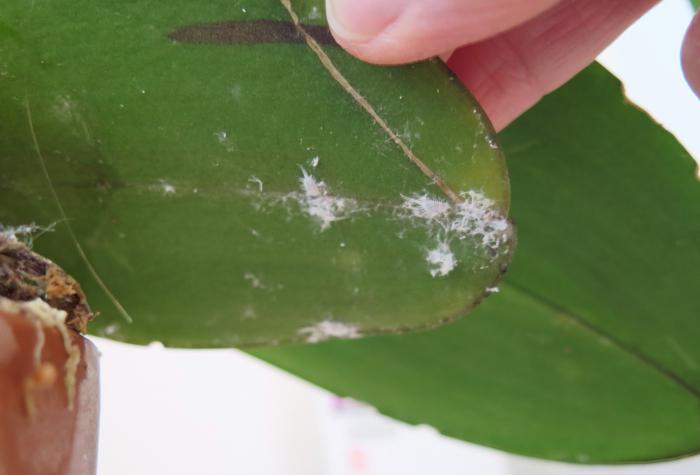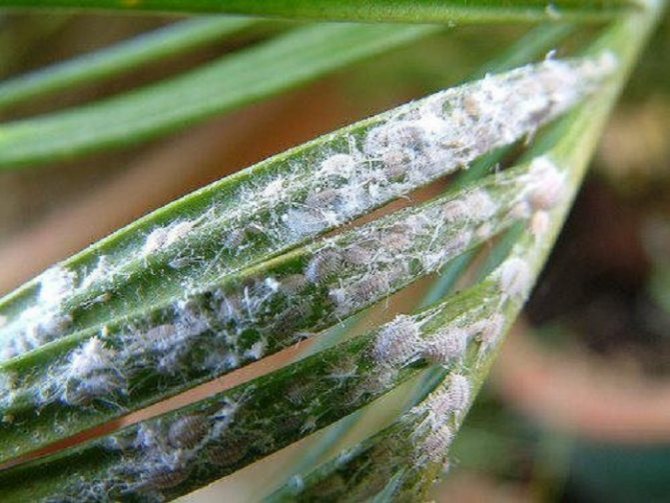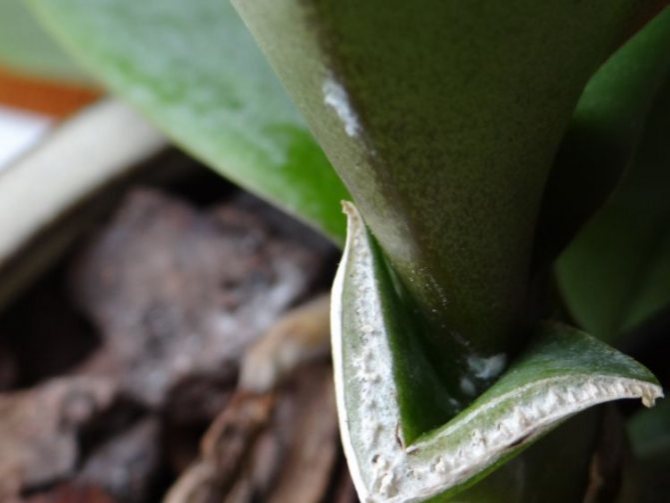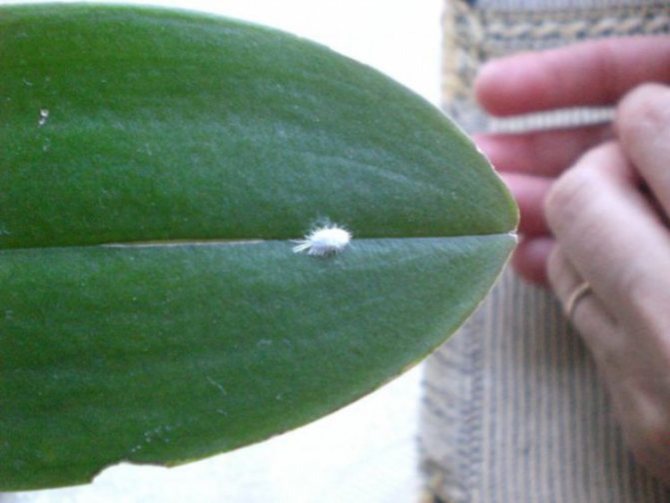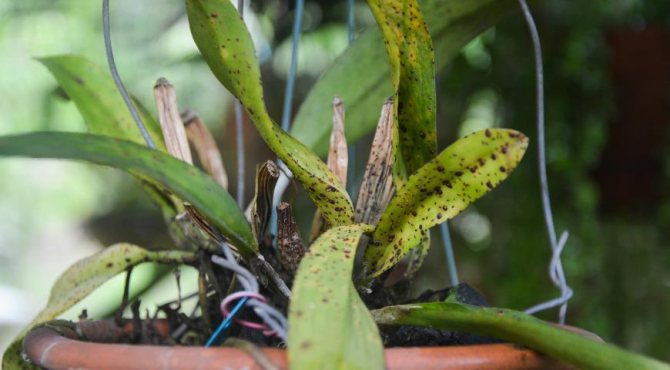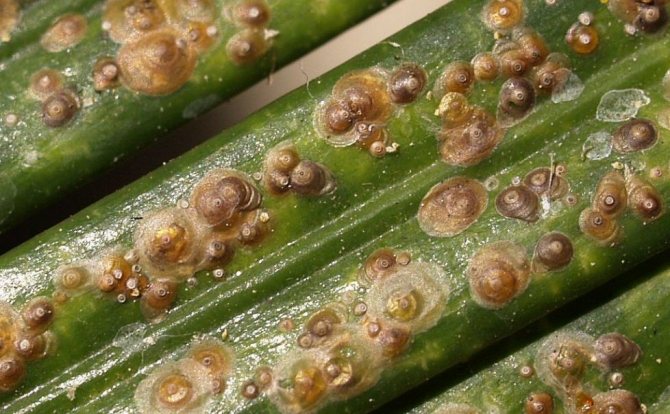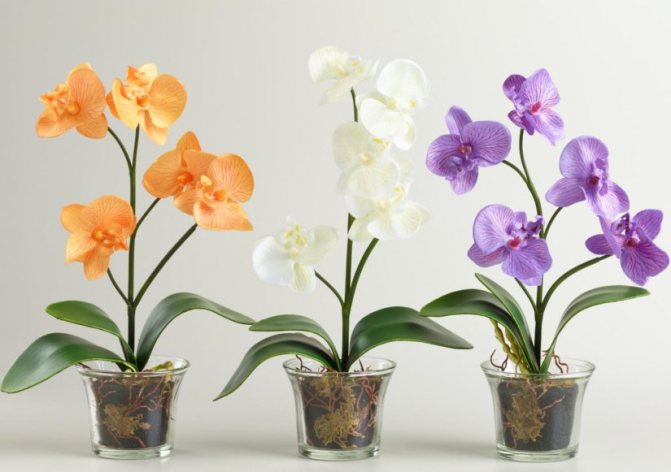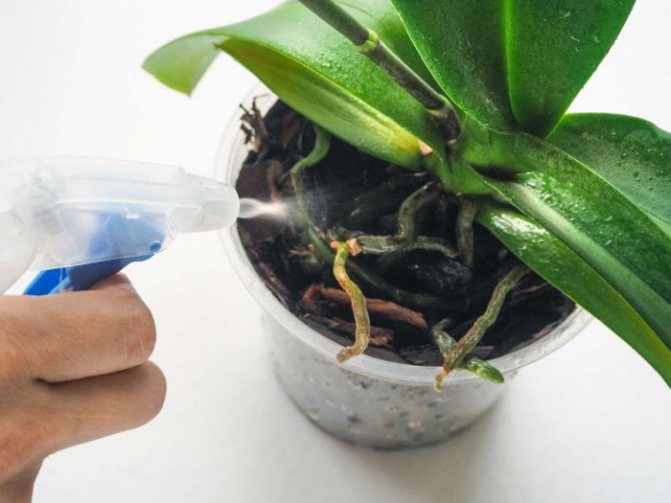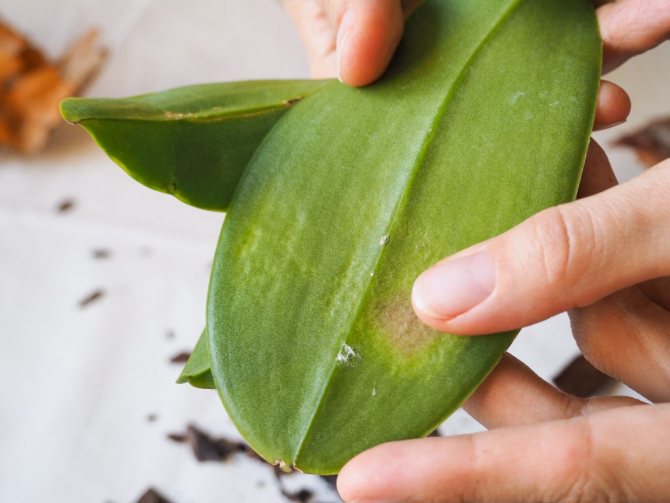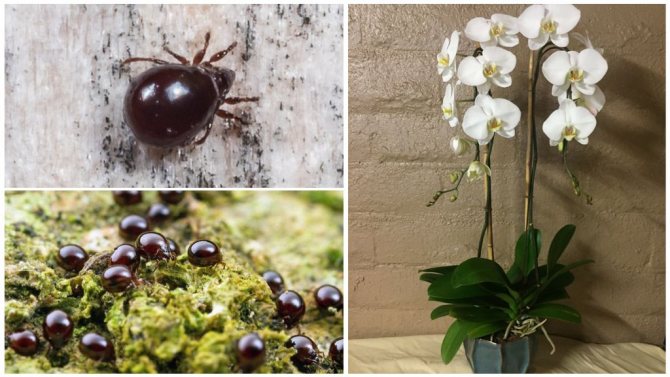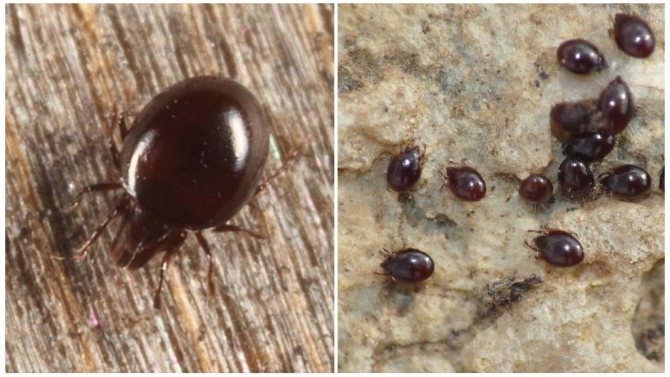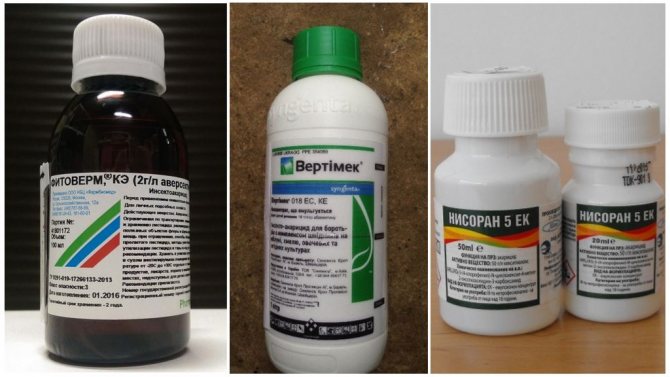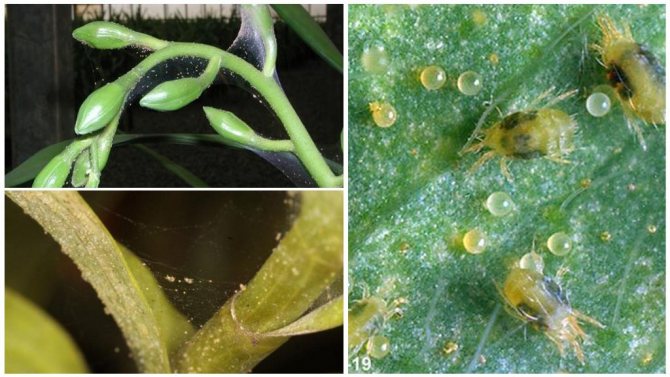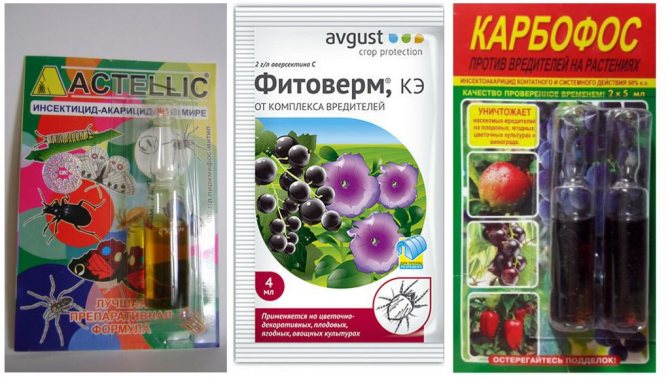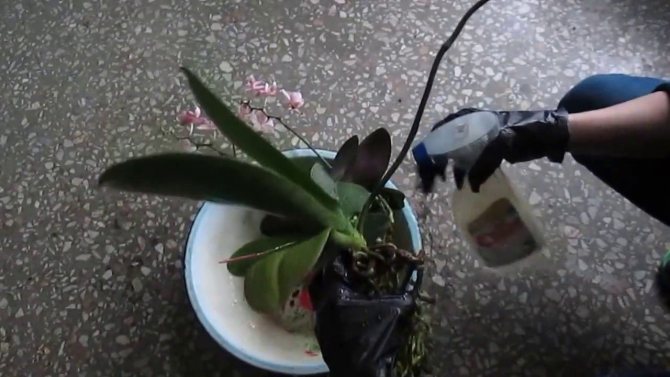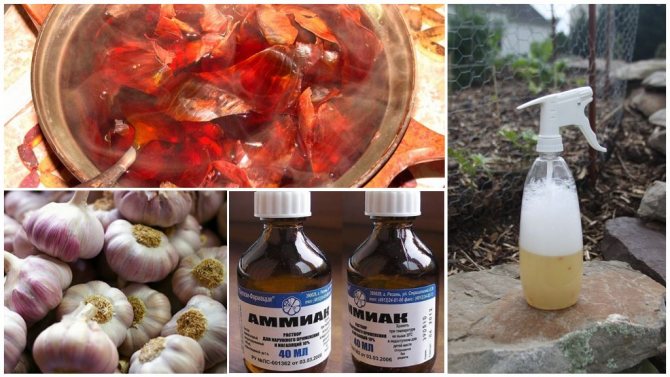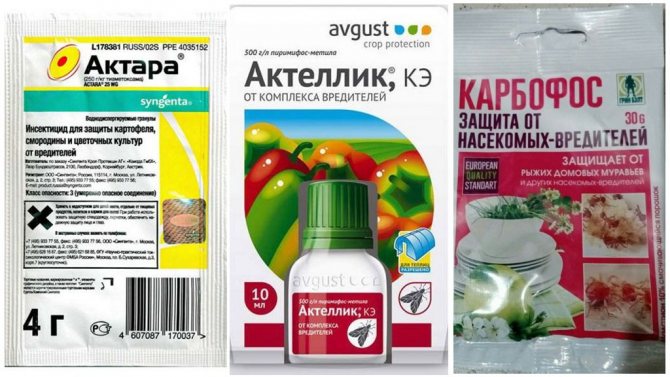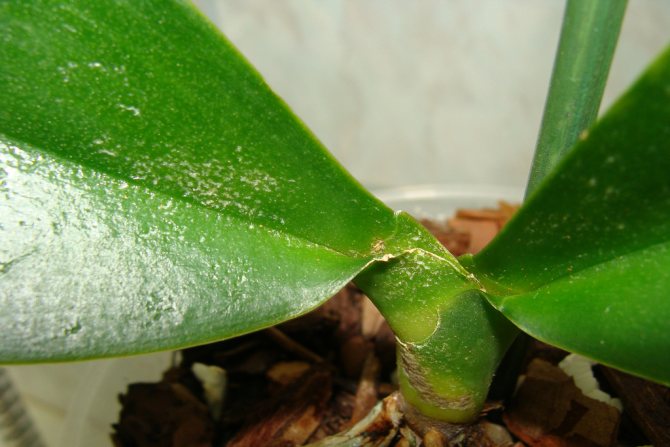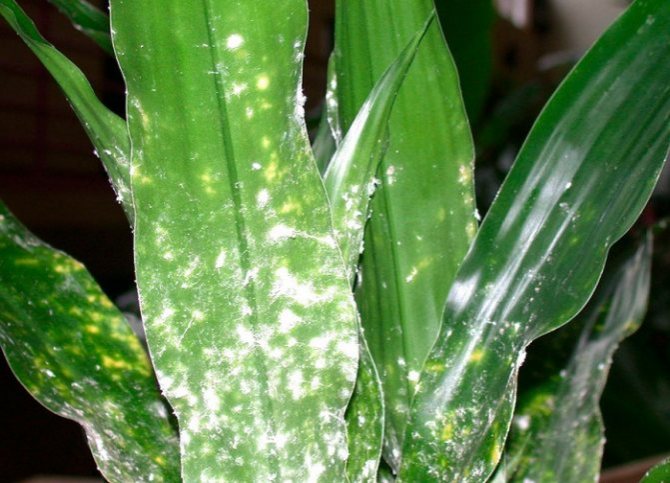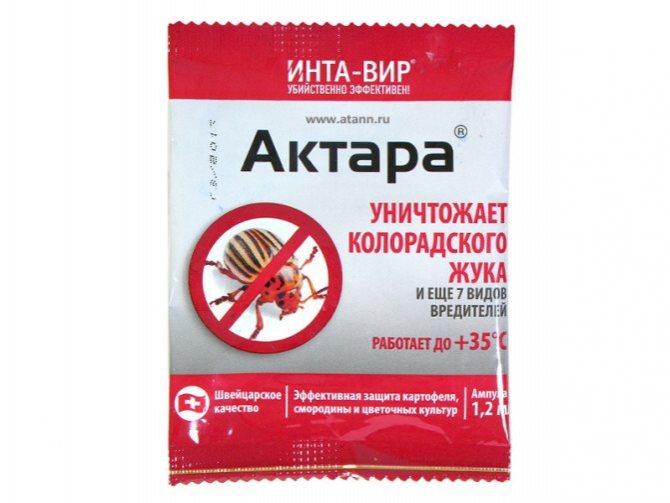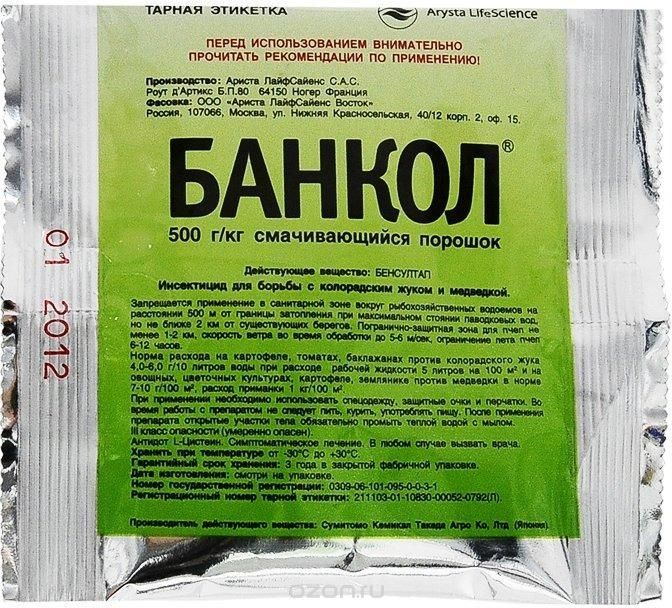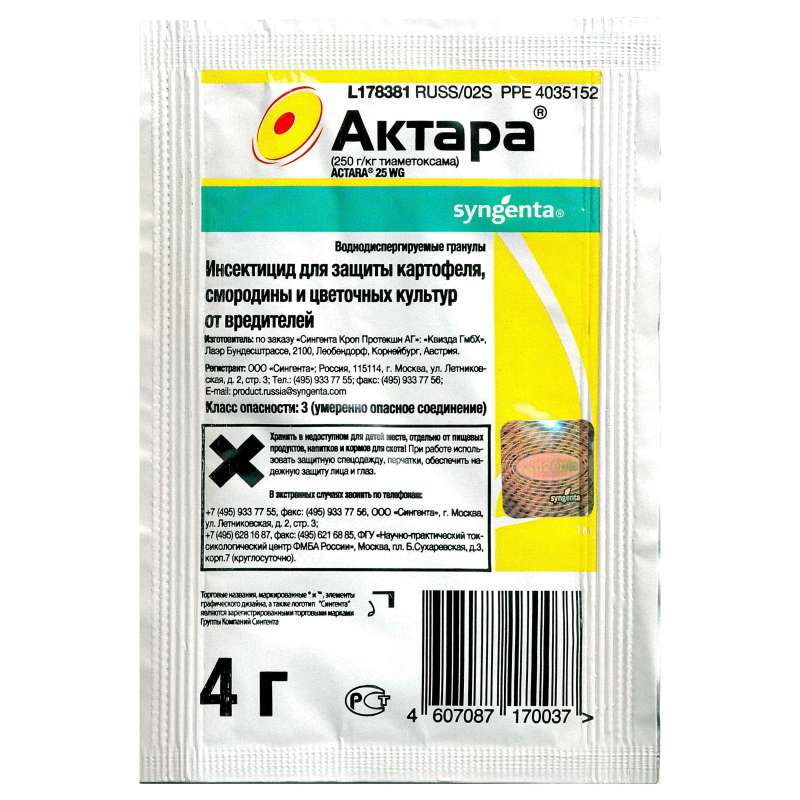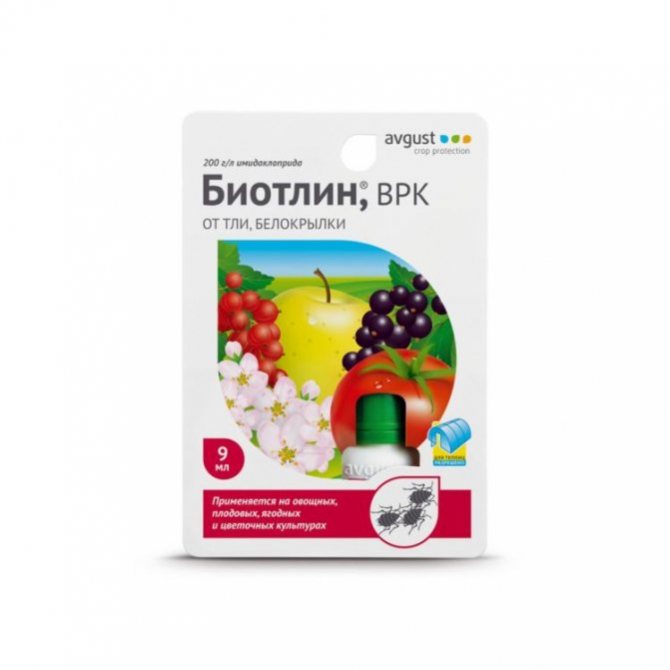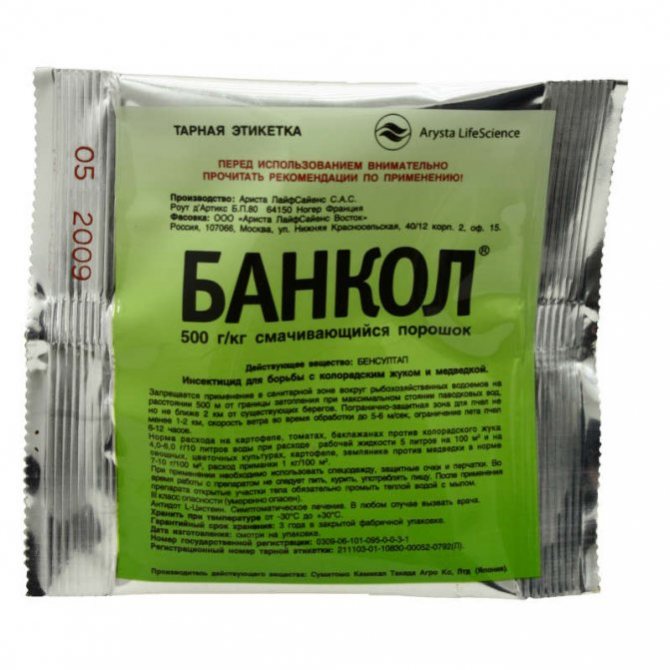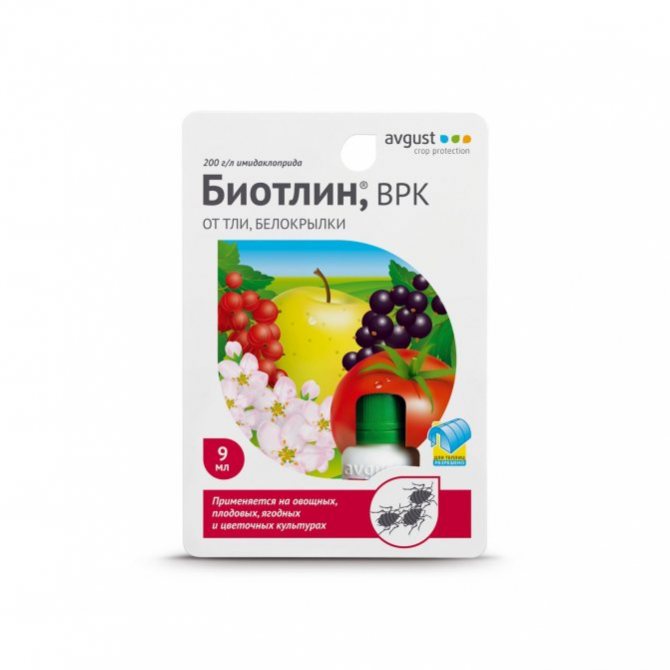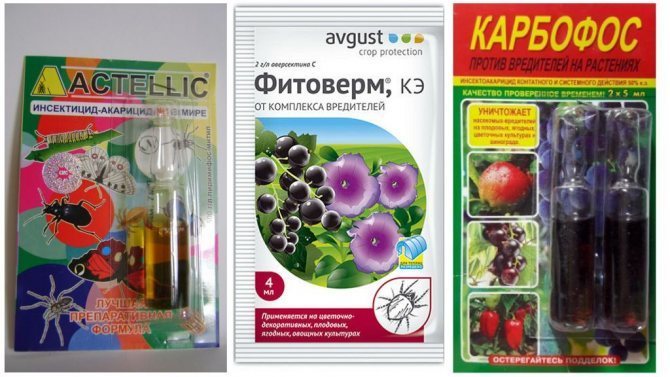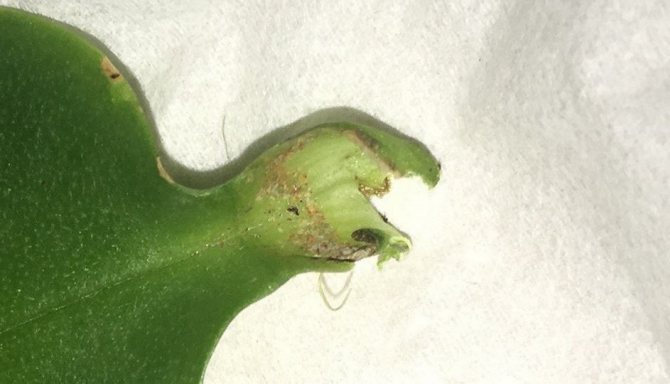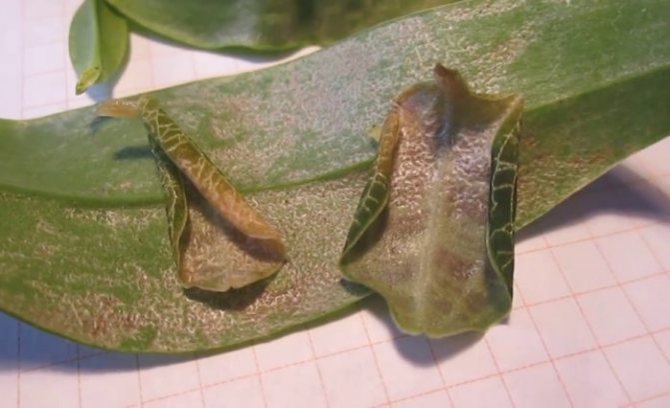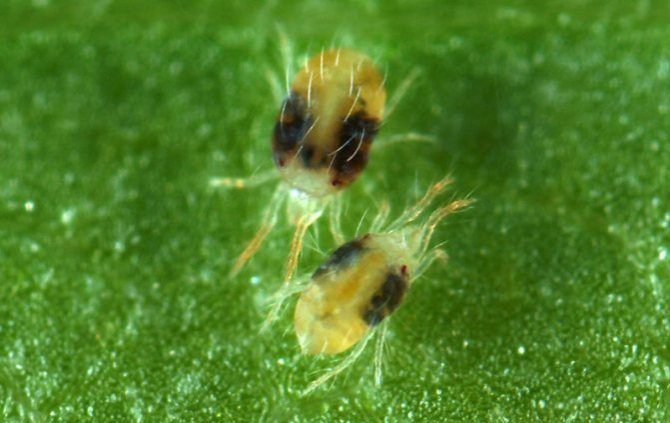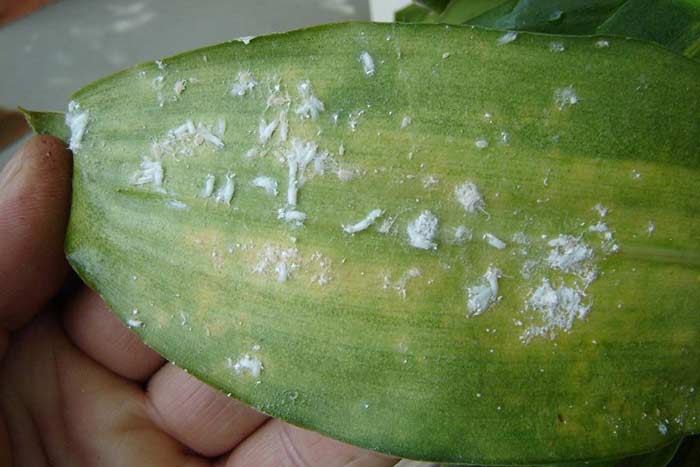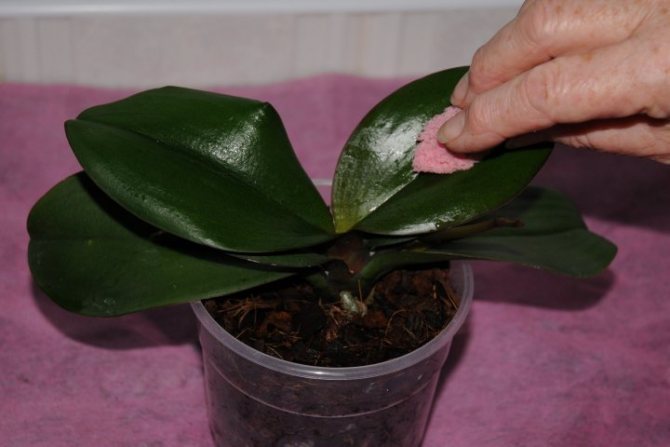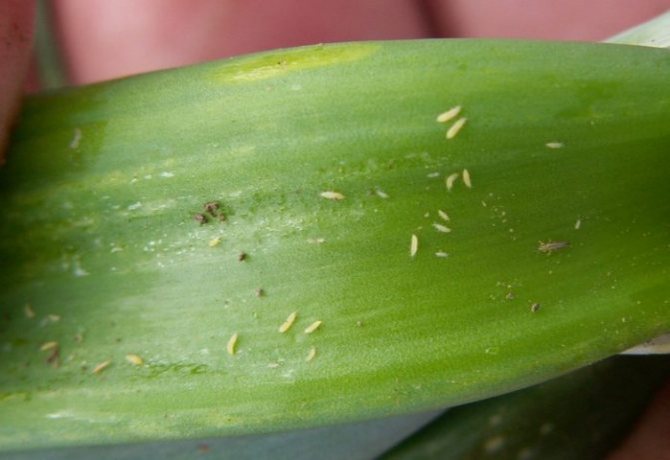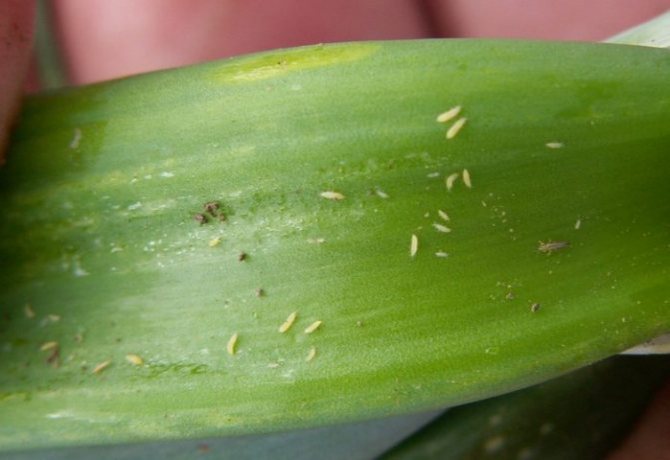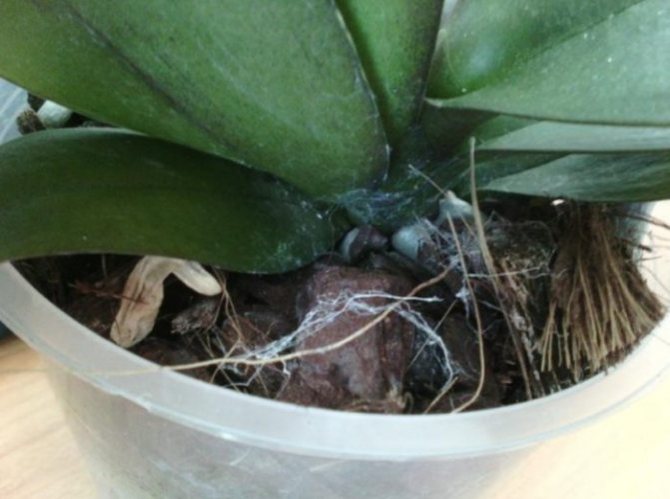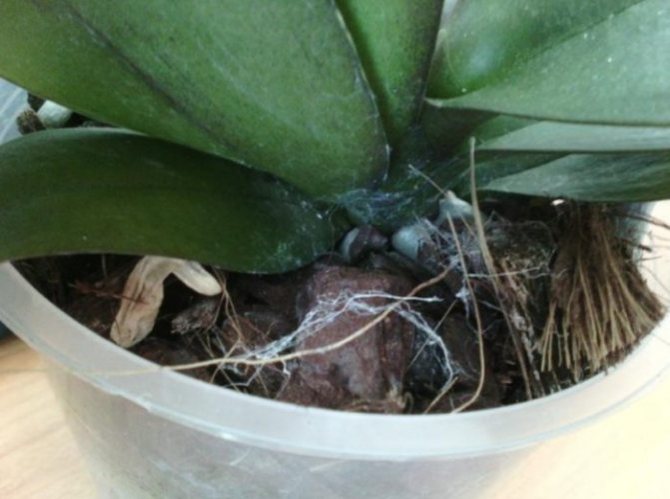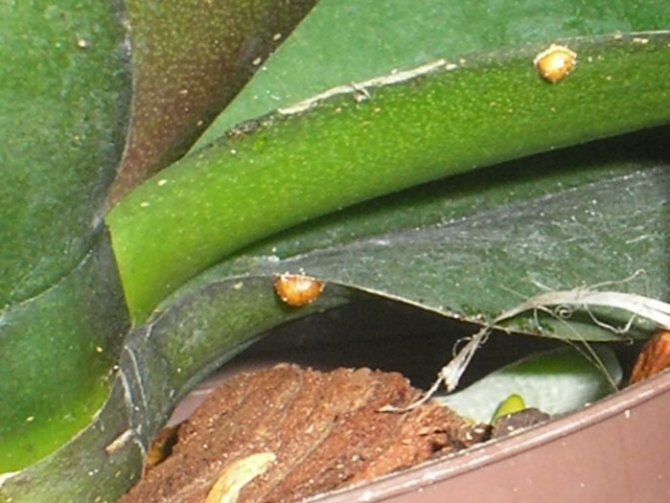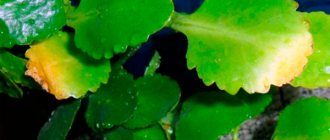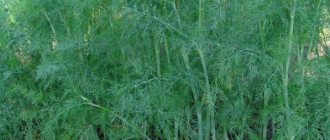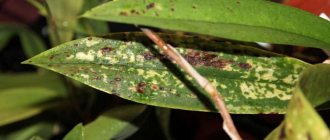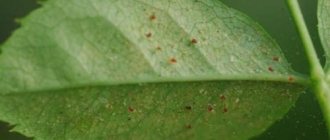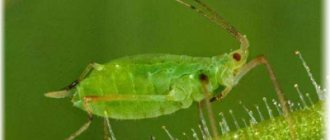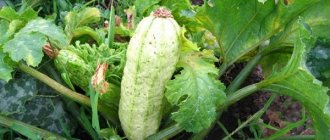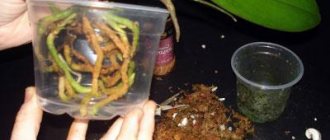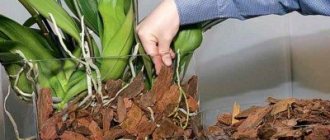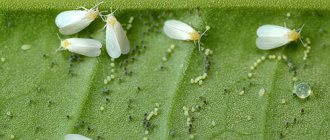Plants »Flowers
0
1612
Article rating
Cultivating an indoor orchid, flower growers have to deal with parasites that infect it. There are several types of orchid pests, and each of them should be dealt with in its own way.
Orchid pests
The destruction of harmful insects at home and in greenhouses is carried out using pesticides. Chemistry treatment helps fight parasites, but the likelihood of their reappearance is high. The thing is that flower pests have a larval stage - during the dormant period, small larvae painlessly tolerate several chemical treatments.
Each type of parasite has its own scheme and treatment interval. This makes it possible to destroy the larvae during their transformation into a more mature stage of development.
Mealybug
This insect is a dangerous pest of the phalaenopsis orchid. It starts in the bark used to prepare the substrate for plants, or is brought in with dust or other pests: aphids, ants.
Worms settle on flowers, in the ground, on the roots, at the base of the stem, under the scales of the leaves. With a massive invasion, a white bloom appears on the plant, similar to cotton or cobweb.
Females lay eggs on the underside of the leaf plate. The hatched larvae suck the juice from the leaves of the plants, then sink into the soil and parasitize on the roots.
To remove the mealybug, the root system of the plant is washed with Fitoverm. All damaged parts on the flower are removed and treated with charcoal powder. The flower is transplanted into a new substrate.
For the purpose of prevention, re-cultivation of already new soil is carried out. Every 5 days, the leaves are wiped with the same product 3 times.
To prevent the reappearance of the parasite on the plant, you should remove withered and dried leaves in time, try not to overflow the flower and provide it with good lighting.
The main reasons for the appearance
Pests in a flower container appear for the following reasons:
- buying an already infected flower in a store;
- using contaminated equipment when transplanting a plant into a new pot;
- independent preparation of the substrate for orchids using infected components: bark, moss, leaves, etc.;
- an abundance of flowers growing in one place on the windowsill. In this case, the risk of infection increases, since conditions are created for the rapid spread of parasites among the representatives of the domestic flora.
These are the main reasons why bugs and worms can appear in a container with an orchid.
Nematodes
Parasitic insects settle on leaves, stems or roots. There are several varieties of nematodes, but white or transparent worms up to 1 mm long are most often found on orchids.
These phalaenopsis orchid pests feed on plant sap, after which the affected areas turn brown or black, and then die off.
If you notice these signs, the plant should be quarantined immediately because the nematode moves to other flowers.
Treatment:
- "Dekaris".1 crushed tablet in 1 liter of water. The prepared solution is poured over the substrate.
- The use of drugs-nemasticides: "Diazinon", "Heterophos", "Fensulfotion", "Carbofuran", "Aldicarb" and "Thionazin".
Affected flowers should be handled carefully. These drugs are highly toxic to humans and pets. In order to no longer meet nematodes on orchids, you should try to improve care.
Prevention measures
Post-purchase processing
When you buy phalaenopsis in the store, then do not put it on the windowsill next to other plants, as the substrate can dangerous parasites breed.
Phalaenopsis pot put in water, wait 10 min.
If there are pests in the substrate, then water will wash them away.
Carefully consider an orchid, very carefully inspect the underside of the leaves, buds, root system.
As a rule, you can kill any parasites that you find wiping phalaenopsis with a solution with soap.
Periodic visual inspection
Occasionally examine carefully all parts of the phalaenopsis, especially the underside of the leaves, foliage axils and the substrate.
Preventive treatment
Important! Fitoverm is well suited for preventive treatment. This is the safest biological product.
Dissolve 1 ampoule in 0.5 liters of water.
Process the leaves, stems and water the substrate.
Shields
In appearance, these insects are somewhat reminiscent of a match head. They parasitize on pseudobulbs, leaves and stems. Small scale insects, about 0.2 cm in size, in the course of their vital activity, secrete sticky droplets, in which a sooty fungus multiplies. Dark spots on the surface of the plant indicate the presence of a parasite.
Control measures:
- Manually remove the pest from the flowers.
- Spray the plant with Fitoverm or Actellik. Re-treat after 7 days.
- Move the flower to another pot with a new substrate, pre-rinse the roots with phytoverm.
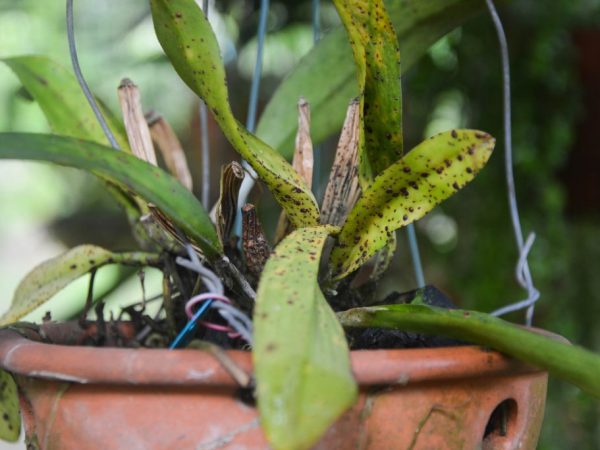
Orchid scabbard
Description
The spider mite has an oval body, the dimensions of which can be 0.3-0.5 mm. Its color will depend on the food consumed, often the chitinous cover is red or green. Adults have 4 pairs of legs, but at the same time they move extremely slowly. In the process of vital activity, the parasite weaves the thinnest web, with which it entangles the stems, leaves and buds of plants. Several generations of parasites develop under it.
Spider mites reproduce rapidly. From the moment of laying to puberty, it takes from 10 to 20 days - it depends on the climate in which the pests live. The larvae that hatch from the eggs have only 3 pairs of legs, the fourth appears through several molts. The total life span is up to 5 weeks.
A dry, warm climate is ideal for spider mites. Normal reproduction and development takes place at a temperature of + 27 ° C and a humidity of 30-40%. If the air humidity begins to rise, the development of young individuals will be slowed down.
On a note! This feature is often and very successfully used in the fight against spider mites on an orchid!
Puffs
Leg-tails, or podura, are small caterpillars of a cream, sometimes white, sometimes light green color with antennae. Their size is about 2 mm. On the abdomen of insects there is a special shield with which they can jump. This unique ability of caterpillars allows you to distinguish leaping suckers from mealybugs.
The first step in getting rid of parasites is to stop watering. If this does not help, insecticides are used.
The drug "Bazudin" helps to get rid of the parasite. It is scattered in a thin layer on the surface of the substrate. After a few hours, the pests die.
Other means also help to fight orchid pests: "Aktara", "Pochin" and "Mospilan".To get rid of parasites, the land is cultivated at least 2 times with a frequency of 10 days.
Ways to fight
In order to prevent the spread of mealybugs to all pets, it is necessary not only to water the plant, and each time carefully examine it for the presence / absence of pests. If this did happen, then:
- The orchid must be urgently isolated, be sure to check the nearby plants;
- Remove visible worms with cotton swabs by wetting the sticks with vodka, calendula tincture or water;
- Arrange a hot shower of 40-50 degrees for the orchid, which is destructive for the mealybug;
Folk methods
When there are no chemicals at hand or there is no desire to use them, you can prepare folk remedies:
- Garlic tincture... Crush or grate 5 cloves of garlic, pour 0.5 liters of boiling water, leave for 4 hours, filter, grease the leaves and tubers with a brush with undiluted solution;
- Vodka with soap... For 1 liter of water 15 gr. liquid soap and 10 ml of alcohol or 20 ml of vodka. It is applied to places of accumulation of insects. You must first try on a small area of the orchid, as there are plants that are very sensitive to alcohol;
- Oil solution... 1 liter of warm water, 2 tablespoons of olive oil, mix thoroughly and spray the flower;
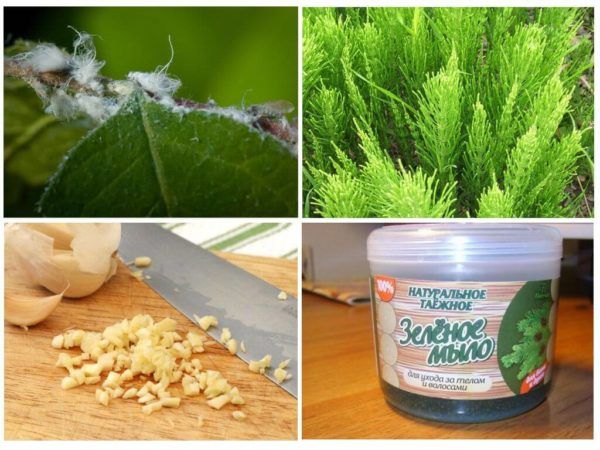

Folk remedies help fight mealybugs at home.
After these procedures, you must carefully dab the leaf axils and a growth point.
Mechanical cleaning
Without mechanical cleaning, getting rid of the mealybug will be very problematic. What is it:
- With a damp swab or cotton swab we clean the orchid from visible pests;
- If the peduncle or buds of the plant are affected, it must be cut and discarded;
- From old leaves, dry scales remain on the stems / pseudobulbs - they need to be removed, as there may be clutches of eggs or the worms themselves. Remove the latter with a damp swab;
- Mealybugs love settle on young leaves or orchid sprouts that have concentrated a large amount of amino acids. It is quite difficult to remove the pest from there. You can try to do this with a toothpick or soak the orchid removed from the substrate in a soapy solution - the worms themselves will crawl out of there;
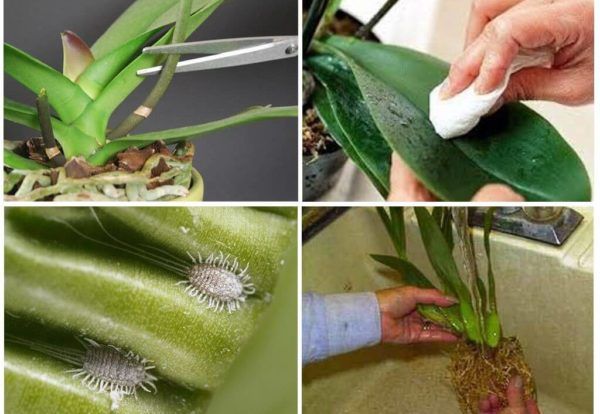

At home, you can remove the mealybug yourself.
To prevent re-infection - windowsill, glass washed with detergentx funds, curtains are erased. You can treat the plant with fungicides.
Chemicals
Chemicals are produced in two forms:
- Granules or sticks... This is not suitable for orchids because of the composition of the soil in which they grow and the content of fertilizers in the preparations themselves;
- Liquids or emulsions... Oil emulsions are applied to areas where insects are sitting. But you need to know: since the oil clogs the stomata of plants, this leads to death of flowers in large areas of pest infestation.
Mites
There are several types of ticks:
- Root (bulbous). The adult insect is white, the larvae and eggs are yellow. The danger of this pest is that it is almost impossible to notice it. This insect gets inside the roots, sucks out the juice and deprives the flowers of food. At the advanced stage of the lesion, the roots have only a shell with voids inside. The bulb mite is a carrier of a fungal disease.
- False spider web (flat body). This is a red or red insect that feeds on leaf sap. The affected foliage first turns gray, then turns brown and falls off.
- Red spiderweb. This is a small spider of red color, braiding foliage with cobwebs. It sucks juices from tissues, as a result of which the leaves turn yellow, curl and fall off. Orchids do not form flower buds when infested by the parasite.
Control methods
For effective control, the root system is removed, the dead parts are removed and the plant is watered with Fitoverm, then the plant is transplanted into a new sterilized substrate. Also, the aerial part is treated twice with the same agent with a frequency of 7 days.
To cure a plant with an invasion of a red spider mite, the flower should be treated with phytoverm. Spray 3 times at intervals of 5 days at a temperature not lower than 30 ° C. To exclude its reappearance, high humidity is provided in the room.
To exterminate the flat-calf mite, the flower is sprayed with the same means and in the same way as in the previous case.
What to do to prevent the plant from getting sick again?
- To prevent infection with parasites, newly acquired or returned flowers from the dacha will be quarantined for two weeks. At this time, the plants should be kept in a separate room from the main flower garden under close scrutiny.
- To prevent infection, it is necessary to select the correct watering regime so that the substrate has time to dry out between operations, and to carry out regular spraying, increasing the humidity of the air.
- When transplanting an orchid, it is better to use a high-quality substrate from a well-known manufacturer, and when using the bark, it must be heat treated.
In order to prevent bugs from appearing on orchids, it is necessary to systematically carry out a preventive examination. Such an event will allow you to detect the problem in time, apply the most gentle methods of dealing with parasites and prevent infection of the entire flower garden.
Midges
There are several varieties of gnats that live on indoor orchids. Knowing what kind of midges parasitizes on the orchid, they determine how to deal with the pest.
Sciarids
These are small black insects with a length of 3 to 5 cm. Sciarids are popularly called flower midges.
They lay eggs in the ground, from which white, worm-like larvae begin to develop. Such worms do no harm to plants. They pose a great danger to the root system. Sciaris worms often appear in the soil of weakened or young orchids.
Fungal infection and root rot develop in the damaged areas.
It is possible to save the plant, but it is easier to prevent the appearance of parasites by using special sterilized substrates for growing flowers. If the preparation of the soil is carried out at home, it is thoroughly calcined in the oven or kept in the cold for a day. In order to avoid infestation by midges, it is forbidden to fertilize flowers with tea, thickening coffee, food leftovers.
They fight pests of this species of orchids using the drug "Thunder-2" or "Bazudin". The soil is sprayed in a pot, and after a week the procedure is repeated.
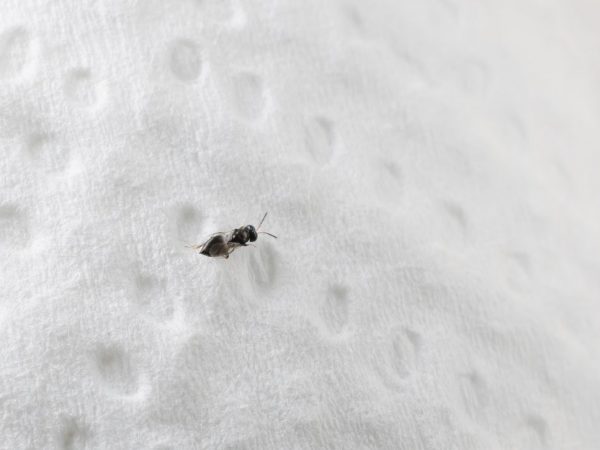

Sciaris
Whiteflies
Whitefly butterflies are pests of phalaenopsis orchids, similar to white flies. At the slightest touch of a flower, they quickly fly into the air.
Adults and their larvae feed on foliage sap. Severely affected specimens gradually wither, their leaves turn yellow and curl up into a tube.
The fact that these pests are bred on flowers is determined by the presence of eggs and whitefly larvae. They are concentrated on the underside of the leaf blade, under the bark and on the surface of the substrate.
Thrips
It is difficult to notice these insects because they are nocturnal. Small pests of black color, 2.5 mm in size, feed on orchid juice, affecting not only the leaves, but also the buds, flowers, and the root system. In appearance, they resemble sticks with two pairs of wings folded on the back. Habitat - soil substrate.
You can see parasites by carefully examining the soil in the pot. Also, dark spots on the leaves indicate the presence of thrips.
Fruit midges
Fruit midges (fruit fly) are attracted by rotted soil, watering the plant with tea. These reddish small flies, 1-2 mm in size, multiply rapidly in a humid environment, especially in places where there are rotting fruits, rotting remains of vegetation.
They warn that the plant is suffering from excess moisture. And this threatens the development of root rot and wilting of the flower.
They get rid of midges by reducing the dose and frequency of watering, as well as removing from the room any food debris that sour or rot.
What is the danger?
The danger of being hit by the worm in the next:
- Mealybugs are sucking insectsfeeding on the juices of the plant, while they inject poison. The orchid slows down its growth and development, the leaves turn yellow and fall off;
- Female insect release a transparent sugar substance - honeydew, which serves as the optimal environment in which fungal infections develop. Extensive mealybug infestation is fraught with flower death.
Orchid care rules
In order not to resort to the treatment of phalaenopsis orchid pests, they carry out preventive measures, provide the plant with competent care.
Expert advice:
- Provide good lighting for the orchid. Do not put it in the sun, otherwise it will get severe burns, the leaves will turn yellow, and the flower will become vulnerable to many pests. It requires 12 hours of diffused light.
- Provide the plant with a stable temperature regime within 20-27 ° С during the day and 15-23 ° С at night.
- Water not too often and in small doses to prevent overflow. The soil should not dry out, otherwise the plant will lose its decorative effect and weaken. The water is used warm, settled.
- Spray the orchid regularly in the morning.
- Fertilize flowers every 3 weeks.

